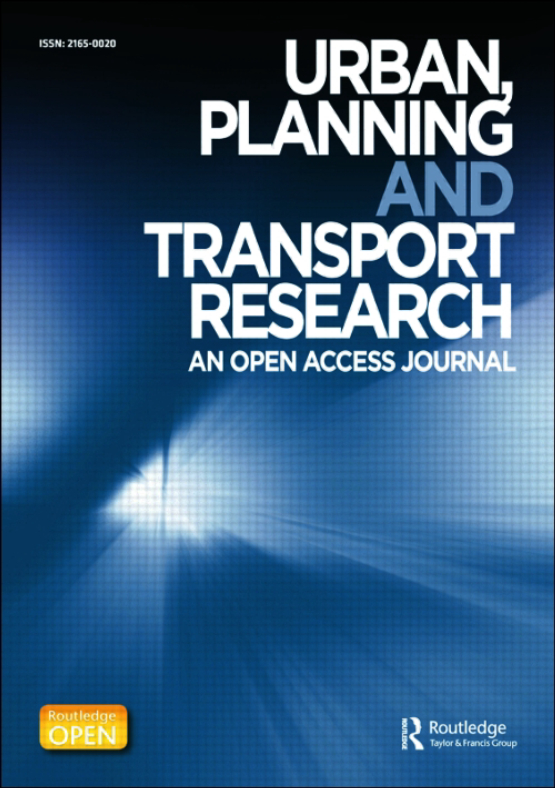Submit a Manuscript to the Journal
Urban, Planning and Transport Research
For an Article Collection on
Multi-Scalar Urban Planning for Industrialized Building: Bridging Planning, Technology, and Construction Innovation
Manuscript deadline


Article collection guest advisor(s)
Dr. Sahar Soltani,
Monash University
Sahar.soltani@monash.edu
Multi-Scalar Urban Planning for Industrialized Building: Bridging Planning, Technology, and Construction Innovation
The rapidly changing demands of urban development call for innovative solutions to address construction efficiency, sustainability, and logistics challenges in complex city environments. In this context, Industrialized Building (IB) is gaining momentum due to its potential to address sustainability issues, housing pressures, and construction productivity by integrating advanced technologies, standardized processes, and off-site manufacturing. The success and scalability of IB systems rely on seamless coordination across urban, regional, and site scales. Logistics, transport planning, and supply chain management are critical enablers, addressing challenges that even the most optimized manufacturing processes cannot overcome without efficient transport corridors and well-placed consolidation centers. Beyond production, IB introduces systematic processes in supply chain management, emphasizing long-term relationships and collaborative practices to ensure logistical consistency. A multi-scalar approach to logistics management—spanning urban planning, regional systems, and site-specific operations—ensures that urban-scale strategies, regional connections, and site-specific needs are cohesively integrated.
The adoption of industrialized building methods faces logistical challenges that span spatial scales and stakeholder domains. Urban-scale planning influences the placement of freight facilities, consolidation centers, and transport corridors, which are critical for supporting the time-sensitive logistics of prefabricated components. At the regional level, intermediary logistics systems, such as multimodal transport networks and regional staging areas, bridge the gap between manufacturing facilities and urban construction sites. Site-specific logistics—including just-in-time (JIT) delivery systems, staging, and last-mile delivery—are pivotal for ensuring smooth assembly operations in both dense and sprawl urban environments. However, existing research often focuses narrowly on manufacturing processes, with limited attention to the broader planning and management practices that underpin IB systems. By adopting a multi-scalar lens, this Collection highlights the critical role of urban planning, transport research, and supply chain integration in overcoming these challenges and advancing IB practices.
This Article Collection invites contributions that examine the logistics and supply chain requirements of industrialized building systems through a multi-scalar lens. Key topics include but are not limited to:
- Spatial and logistical impacts of land use policies, urban freight facilities, and transport corridors
- Role of intermediary facilities, multimodal transport networks, and regional planning in bridging off-site manufacturing and urban construction
- Strategies for optimizing logistics in varied urban morphologies
- Standardized processes and collaborative practices for improving supply chain efficiency
- Application of Industry 4.0 technologies (e.g., digital twins, IoT, BIM, etc.) to optimize logistics operations across macro, meso, and micro levels
- Green logistics practices for enhancing environmental performance of supply chain planning and management
Submissions are encouraged from interdisciplinary perspectives, including urban planning, transport research, construction management, and sustainability studies. Case studies, theoretical advancements, and empirical research are welcome.
Dr. Sahar Soltani is a Research Fellow at Monash University specializing in innovative building methods, digital transformation, and socially sustainable built environments. With a background in architecture and interdisciplinary research, her work focuses on integrated and holistic approaches to building innovation, particularly the intersection of design, urban planning, and industrialized construction. Her recent work includes multidisciplinary projects in collaboration with government and industry partners, developing frameworks for industrialized building implementation across multiple scales of built environment, and bridging the gap between academic research and practical application.
Dr. Sahar Soltani does not have any conflicts of interest to report.
Benefits of publishing open access within Taylor & Francis
Global marketing and publicity, ensuring your research reaches the people you want it to.
Article Collections bring together the latest research on hot topics from influential researchers across the globe.
Rigorous peer review for every open access article.
Rapid online publication allowing you to share your work quickly.
Submission Instructions
All manuscripts submitted to this Article Collection will undergo desk assessment and peer-review as part of our standard editorial process. Guest Advisors for this collection will not be involved in peer-reviewing manuscripts unless they are an existing member of the Editorial Board. Please review the journal Aims and Scope and author submission instructions prior to submitting a manuscript.
